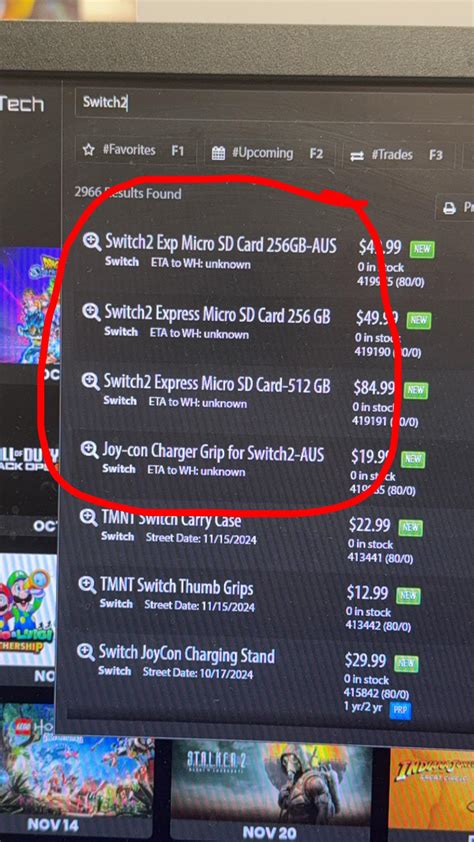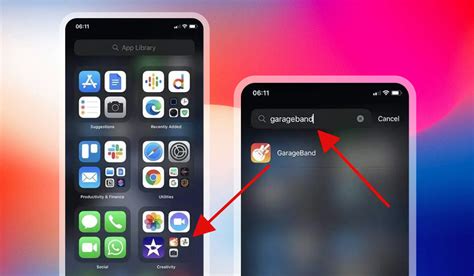
A new electric truck from Chinese automaker Zeekr, a subsidiary of Geely, has surpassed Tesla in range, achieving a claimed 620 miles (1,000 km) on a single charge based on the China Light-Duty Vehicle Test Cycle (CLTC). This feat was accomplished with a version of the Zeekr 001 equipped with a massive 140 kWh battery pack supplied by CATL, representing a significant advancement in EV battery technology and posing a challenge to Tesla’s dominance in the electric vehicle market.
The Zeekr 001’s extended range challenges the perception that Tesla holds an unassailable lead in EV technology, particularly in battery performance. While the CLTC standard is known to produce more optimistic range figures than the EPA standard used in the United States, the achievement nonetheless demonstrates the rapid progress being made by Chinese EV manufacturers. This development underscores the increasing competition in the global EV market, pushing automakers to innovate and improve battery technology. The extended range is achieved through a combination of a high-capacity battery and optimized energy management systems within the Zeekr 001.
The 140 kWh battery pack utilizes CATL’s advanced cell-to-pack (CTP) technology, which eliminates traditional battery modules, integrating the cells directly into the pack. This design increases energy density and reduces weight, contributing to the vehicle’s extended range. The Zeekr 001 also boasts an 800-volt architecture, enabling faster charging times. Under optimal conditions, the vehicle can add up to 310 miles (500 km) of range in just 11.5 minutes.
The Zeekr 001 is not a new vehicle; it has been on the market for several years. However, this new long-range version demonstrates Zeekr’s commitment to continuous improvement and innovation. Zeekr also claims that its vehicles are designed with a focus on sustainability, utilizing eco-friendly materials and manufacturing processes. The company aims to reduce its carbon footprint throughout the entire vehicle lifecycle.
The introduction of this long-range Zeekr 001 model could significantly impact the EV market, particularly in China, where Zeekr is primarily sold. It offers consumers a compelling alternative to Tesla’s Model S and Model X, which have traditionally been the range leaders in the EV segment. It also raises questions about the future of battery technology and the potential for even longer-range EVs in the coming years.
“This achievement by Zeekr underscores the rapid innovation occurring in the Chinese EV market,” stated a transport analyst. “It highlights the importance of battery technology and the potential for Chinese manufacturers to become global leaders in the EV industry.” The industry expert further added, “The CLTC rating should be taken with a grain of salt, however, even with a lower EPA rating, it is still an impressive feat.”
This development also puts pressure on other automakers, including Tesla, to continue investing in battery technology and improving the range of their vehicles. The competition in the EV market is intensifying, and consumers are the ultimate beneficiaries. The race for longer range, faster charging, and lower costs is driving innovation and accelerating the adoption of electric vehicles worldwide.
Background on Zeekr and Geely
Zeekr is a premium electric vehicle brand owned by Geely Holding Group, one of China’s largest and most successful automotive conglomerates. Geely’s portfolio includes Volvo, Polestar, Lotus, and Lynk & Co., in addition to its own Geely Auto brand. Zeekr was established in 2021 with the aim of competing in the high-end EV market, offering technologically advanced and luxurious electric vehicles. The company’s first model, the Zeekr 001, is a shooting brake-style EV that combines performance, range, and practicality.
Geely’s strategic vision for Zeekr is to leverage its global engineering resources and manufacturing expertise to create a world-class EV brand. The company has invested heavily in research and development, focusing on battery technology, electric drive systems, and autonomous driving. Zeekr also aims to establish a strong presence in Europe and other international markets, competing with established EV brands like Tesla, BMW, and Mercedes-Benz.
The Zeekr 001 is built on Geely’s Sustainable Experience Architecture (SEA), a modular EV platform that supports a wide range of vehicle types and battery configurations. This platform allows Zeekr to quickly develop and launch new EV models, catering to different market segments and customer preferences. The SEA platform is also designed to be highly scalable and adaptable, enabling Geely to incorporate future technological advancements into its EV products.
CATL’s Role in Battery Technology Advancement
Contemporary Amperex Technology Co. Limited (CATL) is the world’s largest manufacturer of lithium-ion batteries for electric vehicles and energy storage systems. The company is based in China and has established itself as a global leader in battery technology, supplying batteries to numerous automakers worldwide, including Tesla, BMW, Volkswagen, and Geely.
CATL’s success is attributed to its continuous investment in research and development, focusing on improving battery performance, safety, and cost-effectiveness. The company has developed several innovative battery technologies, including cell-to-pack (CTP) and cell-to-body (CTB) designs, which increase energy density and reduce manufacturing complexity. CATL’s batteries are known for their high energy density, long cycle life, and fast charging capabilities.
The 140 kWh battery pack used in the long-range Zeekr 001 is a prime example of CATL’s advanced battery technology. The CTP design eliminates traditional battery modules, integrating the cells directly into the pack. This reduces the number of components and simplifies the manufacturing process, resulting in a lighter and more compact battery pack. The CTP technology also improves the battery’s thermal management, enhancing its performance and lifespan.
CATL is also actively involved in the development of next-generation battery technologies, such as solid-state batteries and sodium-ion batteries. These technologies promise to offer even higher energy densities, improved safety, and lower costs compared to current lithium-ion batteries. CATL’s commitment to innovation is driving the advancement of battery technology and accelerating the adoption of electric vehicles worldwide.
CLTC vs. EPA Range Testing
It’s important to note that the 620-mile range of the Zeekr 001 is based on the China Light-Duty Vehicle Test Cycle (CLTC), which is known to be more lenient than the EPA (Environmental Protection Agency) standard used in the United States. The CLTC test cycle typically produces higher range figures because it involves lower speeds, less aggressive acceleration, and more favorable environmental conditions.
The EPA test cycle, on the other hand, is more stringent and aims to simulate real-world driving conditions more accurately. The EPA test includes higher speeds, more frequent acceleration and deceleration, and varying temperatures. As a result, the EPA range figures are typically lower than those obtained under the CLTC standard.
For example, a Tesla Model S Long Range, which is rated for 402 miles of range by the EPA, might achieve a significantly higher range figure under the CLTC standard. Therefore, it’s crucial to consider the testing standard when comparing the range of different electric vehicles. While the Zeekr 001’s 620-mile range is impressive, it’s likely that the vehicle would achieve a lower range figure under the EPA standard.
Industry experts estimate that the Zeekr 001’s EPA range would likely be in the 450-500 mile range, which would still be a competitive figure, surpassing many EVs currently on the market. The discrepancy between CLTC and EPA ratings highlights the need for a globally standardized testing procedure to provide consumers with more accurate and comparable range estimates.
Impact on Tesla and the EV Market
The introduction of the long-range Zeekr 001 poses a challenge to Tesla, which has long been considered the leader in EV range and performance. While Tesla’s Model S and Model X have traditionally offered the longest range among electric vehicles, the Zeekr 001’s 620-mile CLTC range surpasses even Tesla’s flagship models.
This development could put pressure on Tesla to accelerate its own battery technology development and improve the range of its vehicles. Tesla has been working on next-generation battery technologies, such as 4680 cells, which promise to offer higher energy density and lower costs. However, the company has faced challenges in scaling up production of these new cells.
The increased competition from Zeekr and other EV manufacturers could also lead to lower prices and greater availability of electric vehicles, benefiting consumers. As the EV market matures, automakers are focusing on offering a wider range of models at different price points to appeal to a broader audience.
The Zeekr 001’s extended range also highlights the importance of battery technology in the EV market. Consumers are increasingly demanding longer range and faster charging capabilities, and automakers are responding by investing heavily in battery research and development. The race for better battery technology is driving innovation and accelerating the adoption of electric vehicles worldwide.
Future Trends in EV Battery Technology
The EV battery technology is rapidly evolving, with several promising trends emerging in recent years. These trends include:
- Solid-State Batteries: Solid-state batteries use a solid electrolyte instead of a liquid electrolyte, offering several advantages over traditional lithium-ion batteries. Solid-state batteries have higher energy densities, improved safety, and faster charging capabilities. Several companies are actively developing solid-state battery technology, and it’s expected to become commercially available in the coming years.
- Sodium-Ion Batteries: Sodium-ion batteries use sodium instead of lithium, which is a more abundant and less expensive material. Sodium-ion batteries have lower energy densities than lithium-ion batteries, but they are still suitable for many applications, such as electric vehicles and energy storage systems. CATL has already announced plans to mass-produce sodium-ion batteries.
- Cell-to-Pack (CTP) and Cell-to-Body (CTB) Technologies: CTP and CTB technologies eliminate traditional battery modules, integrating the cells directly into the pack or the vehicle’s body. This increases energy density, reduces weight, and simplifies manufacturing. CATL’s CTP technology is already being used in several electric vehicles, including the Zeekr 001.
- Wireless Charging: Wireless charging technology allows electric vehicles to be charged without the use of cables. This technology is becoming increasingly popular and convenient, and it could potentially enable autonomous charging in the future.
- Battery Swapping: Battery swapping technology allows electric vehicles to quickly replace their depleted batteries with fully charged batteries. This technology offers a faster alternative to traditional charging and could be particularly useful for commercial vehicles.
These emerging trends in EV battery technology promise to further improve the performance, safety, and cost-effectiveness of electric vehicles, accelerating their adoption worldwide.
The Geopolitical Context
The rise of Chinese EV manufacturers like Zeekr and battery suppliers like CATL also has geopolitical implications. China has invested heavily in the electric vehicle industry and has become a global leader in EV production and battery technology. This gives China a strategic advantage in the transition to electric vehicles and could reshape the global automotive industry.
Western automakers and governments are increasingly concerned about China’s dominance in the EV supply chain and are taking steps to diversify their sources of batteries and other critical components. The United States, for example, has enacted policies to encourage domestic battery production and reduce its reliance on China.
The competition between China and the West in the EV industry is likely to intensify in the coming years, as both sides seek to secure their positions in the rapidly growing electric vehicle market. This competition could lead to further innovation and investment in battery technology, benefiting consumers worldwide.
Zeekr’s Market Strategy and Global Ambitions
Zeekr’s strategy appears to be focused on capturing a significant share of the premium EV market, both in China and globally. The company’s focus on high-performance vehicles with advanced technology and luxurious interiors positions it as a direct competitor to Tesla and other established luxury automakers.
Zeekr has already launched the 001 and the 009 MPV in China, and the company plans to expand its product lineup with new models in the coming years. Zeekr also aims to establish a strong presence in Europe and other international markets, competing with established EV brands.
The company’s success will depend on its ability to deliver high-quality vehicles that meet the needs of discerning customers. Zeekr also needs to build a strong brand reputation and establish a reliable service network to support its international expansion.
Consumer Perspective and Adoption Barriers
While the extended range of the Zeekr 001 is undoubtedly appealing to consumers, several factors could influence its adoption. These include:
- Price: The price of the long-range Zeekr 001 will be a key factor in its success. If the price is too high, it may limit the vehicle’s appeal to a niche market.
- Charging Infrastructure: The availability of charging infrastructure is another important consideration for EV buyers. While charging infrastructure is improving rapidly, it is still not as widespread as gasoline stations, particularly in some areas.
- Consumer Perception: Some consumers may be hesitant to purchase an EV from a relatively new brand like Zeekr. Building trust and establishing a strong brand reputation will be crucial for Zeekr’s success.
- Real-World Performance: The real-world performance of the Zeekr 001, including its range, charging speed, and reliability, will be closely scrutinized by consumers and reviewers.
Overcoming these adoption barriers will be essential for Zeekr to achieve its ambitious sales targets and establish itself as a major player in the global EV market.
The Future of Range Anxiety
The development of EVs with increasingly longer ranges is gradually alleviating range anxiety, which has been a major concern for potential EV buyers. As battery technology continues to improve, EVs will be able to travel longer distances on a single charge, making them more practical for everyday use and long-distance travel.
The Zeekr 001’s 620-mile CLTC range is a significant step towards eliminating range anxiety. While the EPA range is likely to be lower, it still represents a substantial improvement over many EVs currently on the market.
As range anxiety diminishes, consumers will be more likely to consider purchasing an electric vehicle, accelerating the transition to a cleaner and more sustainable transportation system. The development of long-range EVs is a crucial step in making electric vehicles a mainstream choice for consumers worldwide.
Conclusion
The Zeekr 001’s achievement of a 620-mile CLTC range marks a significant milestone in the electric vehicle industry. It demonstrates the rapid progress being made by Chinese EV manufacturers and highlights the importance of battery technology in the race to develop longer-range, more affordable, and more practical electric vehicles.
While the CLTC standard is more lenient than the EPA standard, the Zeekr 001’s extended range is still impressive and poses a challenge to Tesla and other established EV brands. The increased competition in the EV market is driving innovation and benefiting consumers worldwide. The future of electric vehicles looks bright, with continued advancements in battery technology promising to further improve the performance, safety, and cost-effectiveness of EVs in the years to come. The collaboration between Zeekr and CATL exemplifies how partnerships can lead to breakthroughs that redefine industry standards. This development is not just about a single vehicle surpassing another; it represents a shift in the global automotive landscape, with Chinese manufacturers increasingly playing a central role in shaping the future of electric mobility. The impact of the Zeekr 001’s achievement extends beyond specifications and range figures, signaling a new era of innovation and competition in the EV market.
Frequently Asked Questions (FAQ)
-
What is the claimed range of the Zeekr 001, and under what testing standard was it achieved?
The Zeekr 001 achieved a claimed range of 620 miles (1,000 km) based on the China Light-Duty Vehicle Test Cycle (CLTC).
-
How does the CLTC standard compare to the EPA standard used in the United States?
The CLTC standard is known to produce more optimistic range figures compared to the EPA standard, as it involves lower speeds, less aggressive acceleration, and more favorable environmental conditions. The EPA standard is more stringent and simulates real-world driving conditions more accurately.
-
What is CATL’s role in the Zeekr 001’s extended range?
CATL (Contemporary Amperex Technology Co. Limited) supplied the 140 kWh battery pack for the long-range Zeekr 001. The battery pack utilizes CATL’s advanced cell-to-pack (CTP) technology, which increases energy density and reduces weight, contributing to the vehicle’s extended range.
-
What is the significance of Zeekr surpassing Tesla in range?
Zeekr surpassing Tesla in range challenges the perception that Tesla holds an unassailable lead in EV technology, particularly in battery performance. It highlights the rapid progress being made by Chinese EV manufacturers and increases competition in the global EV market, pushing automakers to innovate and improve battery technology.
-
What are some of the future trends in EV battery technology?
Some of the future trends in EV battery technology include solid-state batteries, sodium-ion batteries, cell-to-pack (CTP) and cell-to-body (CTB) technologies, wireless charging, and battery swapping. These technologies promise to offer even higher energy densities, improved safety, and lower costs compared to current lithium-ion batteries.









